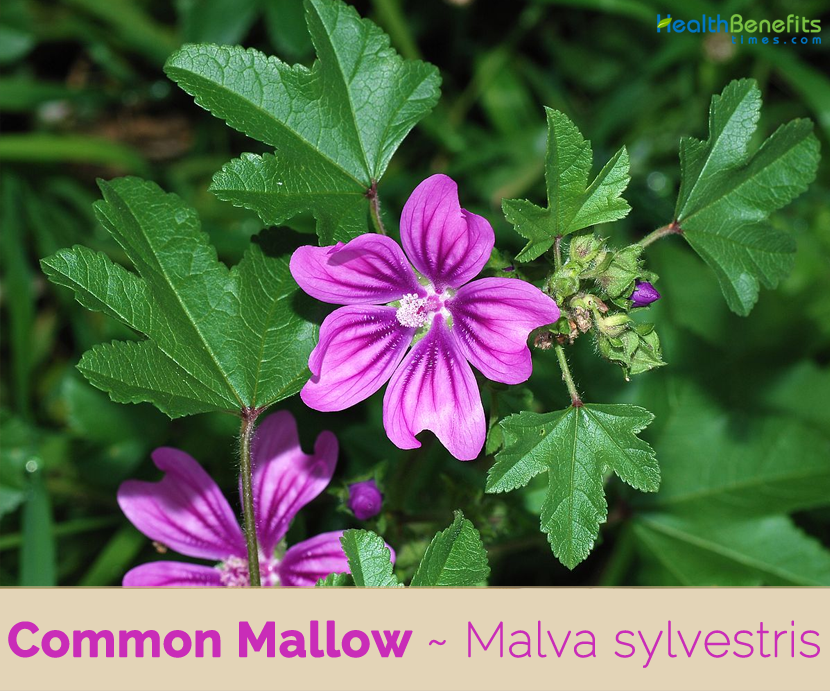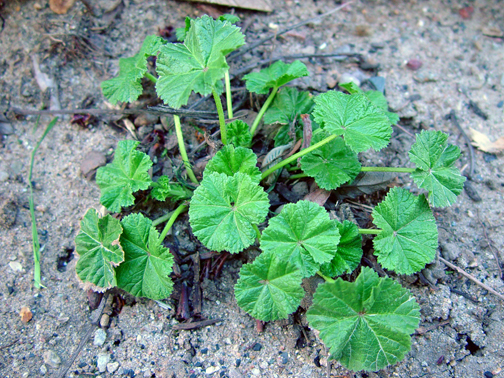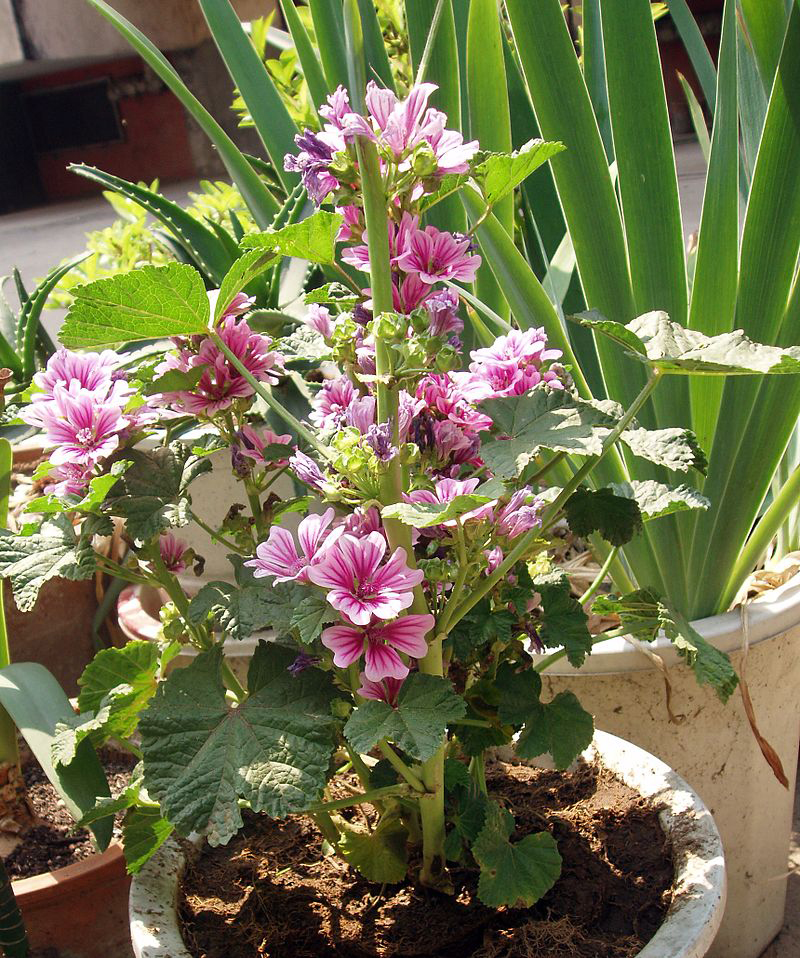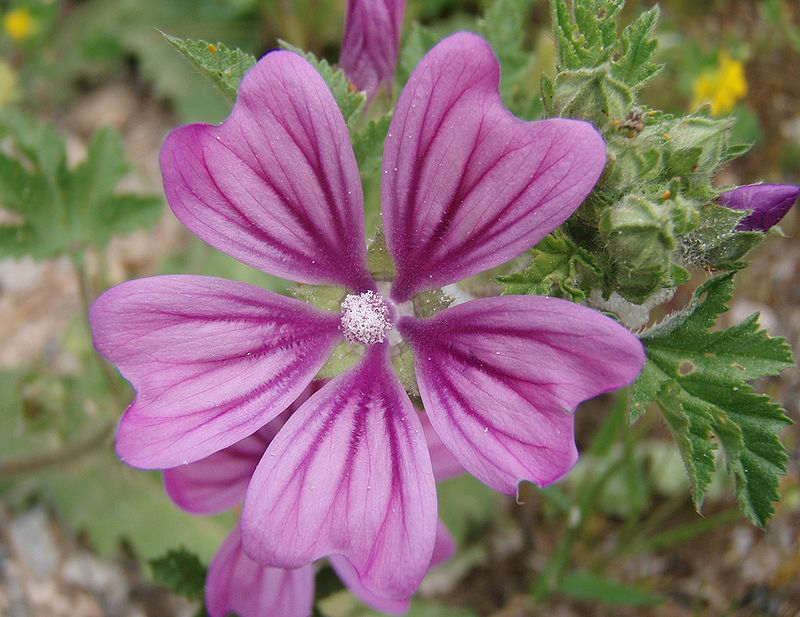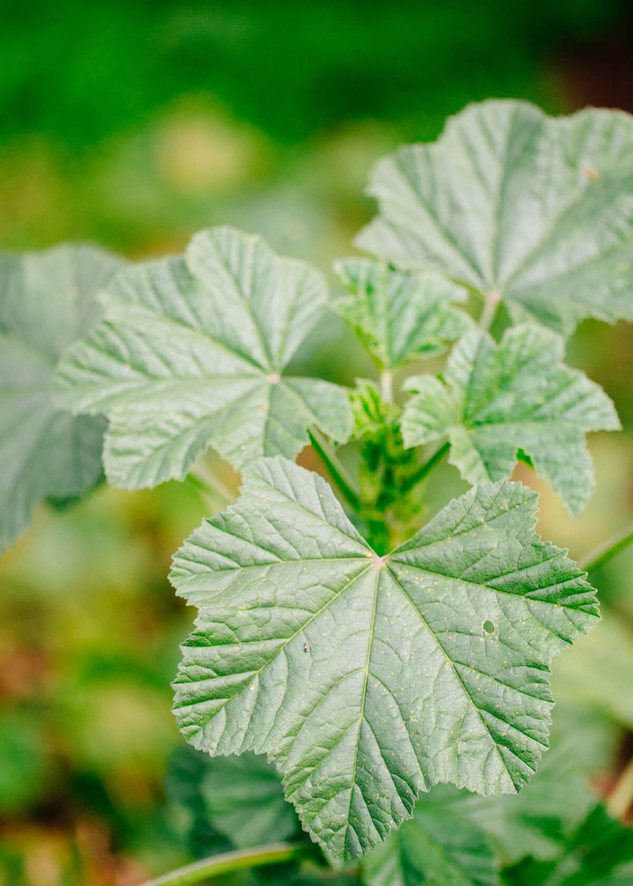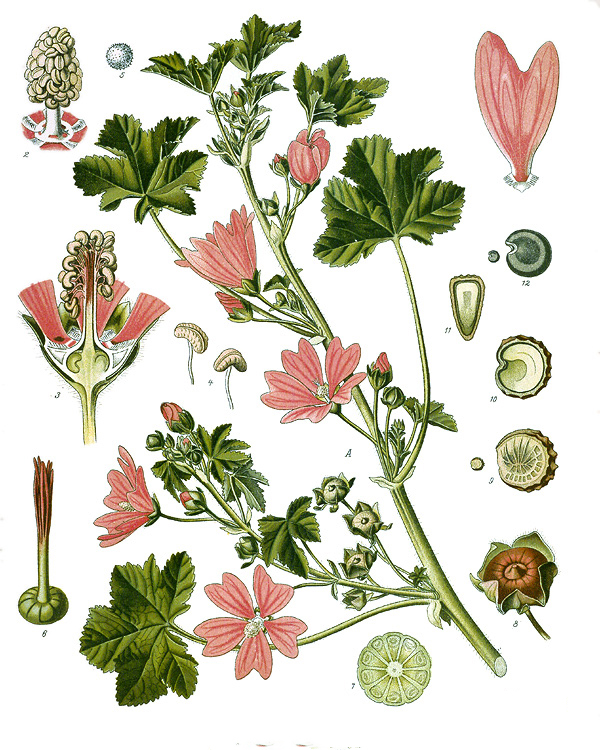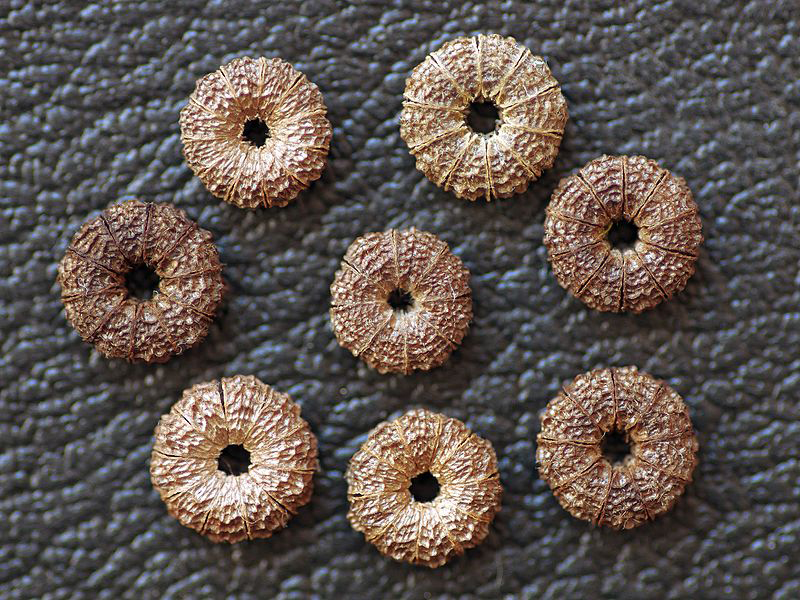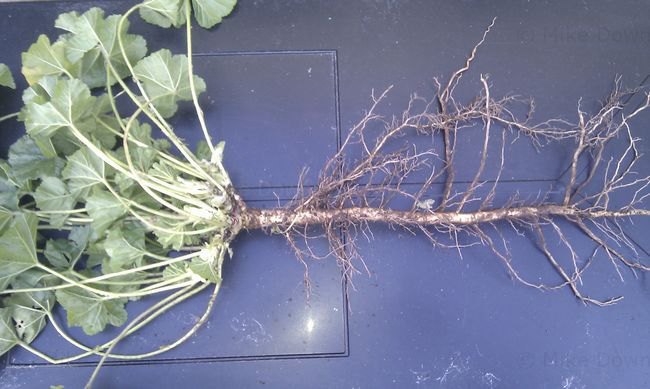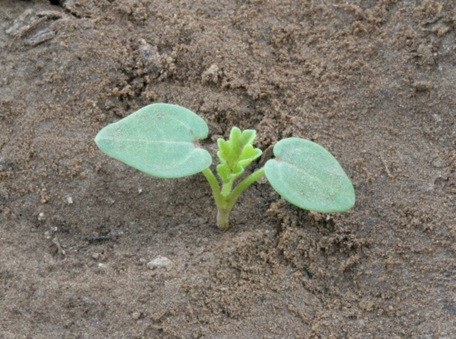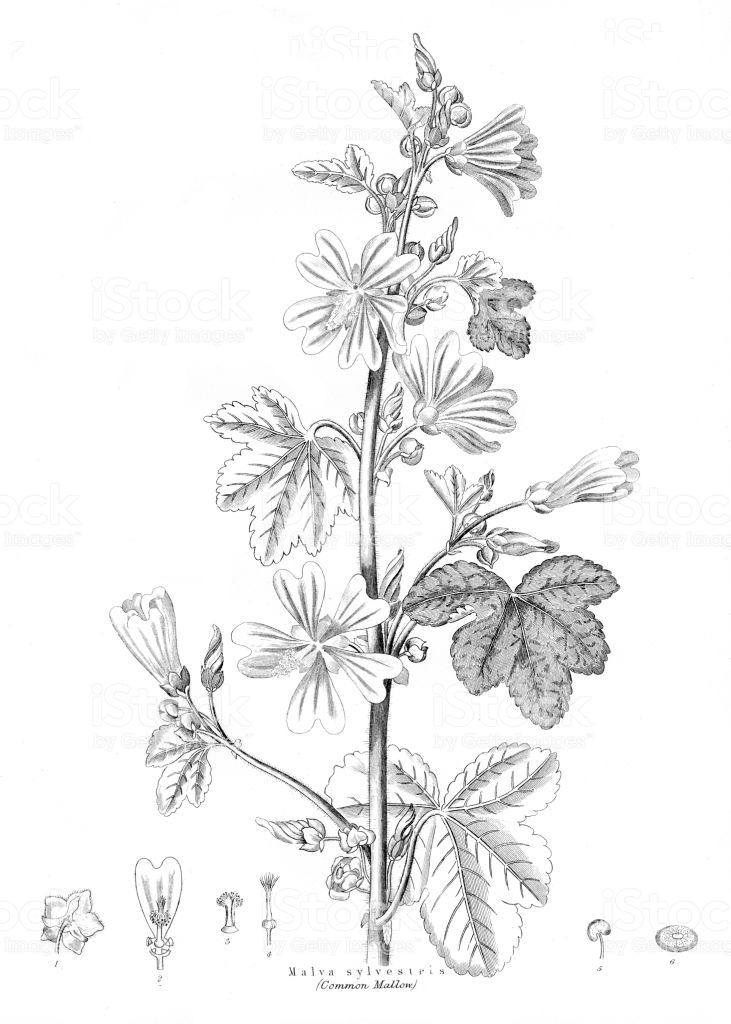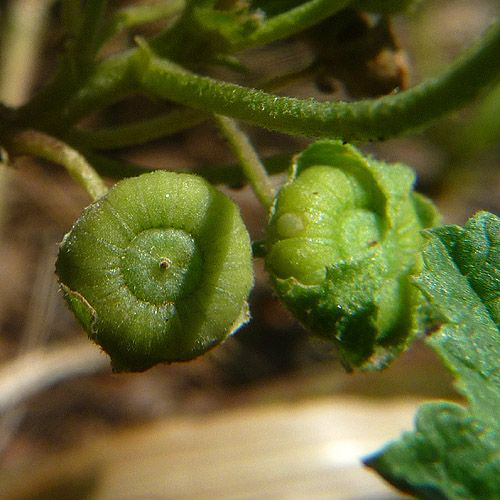| Common Mallow Quick Facts |
| Name: |
Common Mallow |
| Scientific Name: |
Malva sylvestris |
| Origin |
Europe, North Africa, and southwestern Asia |
| Shapes |
Nutlets strongly reticulate (10–12 mericarps, usually without hair, with sharp angle between dorsal and lateral surfaces, 5–6 mm in diameter |
| Calories |
35 Kcal./cup |
| Major nutrients |
Vitamin E (134.00%)
Vitamin C (93.89%)
Magnesium (67.38%)
Iron (45.13%)
Copper (23.11%) |
| Health benefits |
Digestive Issues, Immune System Protection, Anti-inflammatory Action, Sleep Problems, Respiratory Illnesses, Pain Relief, Treats a cough, asthma and bronchitis, Treats infections, skin sores, and burns, Anti-aging properties, Protects the gums from infections,Prevents prostate cancer,Treatment of kidney stones and urinary tract infections |
Known scientifically as Malva sylvestris, Common Mallow is a species of the mallow genus Malva in the family of Malvaceae that also has a number of other common names including Mallow, Blue mallow, Cheeses, Forest mallow, High mallow, Tall mallow, Garden mallow, High cheeseweed, Purple mallow, malva, panecillos, French Hollyhock, tree mallow, billy buttons, buttonweed, cheeseplant, dwarf mallow, low mallow, mallish, round leaf mallow, cheese mallow, dwarf mallow, malice, round dock, round-leaved mallow and running mallow. The plant is native to Europe, North Africa, and southwestern Asia. The plants have been naturalized in North America and are cultivated from Western Europe to Russia. Genus name is an ancient Latin name. Specific epithet from Latin means growing in the woods.
Plant Description
Common Mallow is an annual, winter annual or biennial plant that grows about 3–4 feet (0.91–1.22 m) tall. The plant is found growing in disturbed and neglected areas such as gardens, nursery pots, landscapes, lawn edges, barnyards, road sides, railroad tracks, vacant lots, waste ground, field verges, roadsides, avoiding acid soils, weedy parking lots, lawns, cultivated gardens, cropland, abandoned fields, farm lots, vacant lots, railroads and edges of yards. The plant has stout taproot with course branching secondary roots. Stems are much-branched, erect or trailing on the ground with upturned ends, hairy, 10-60cm (4-24in.) long.
Leaves
Mallow’s kidney-shaped or palmately-lobed leaves are notably creased, typically with dentate margins. Each leaf is 2–4 centimeters (0.79–1.57 in) long, 2–5 centimeters (0.79–1.97 in) wide and 5–10 centimeters (2.0–3.9 in) in diameter. The leaves often show a purple spot in the center of the base of the leaf and this can also be seen to run down the petiole on some specimens. On other specimens, the purple spotting and coloring is completely absent. Mallow leaves have long petioles. Their deep green foliage hints at a renowned drought tolerance. During flowering, the leaves appear alternately on the stems. Holding a leaf relays the surface coarseness. But tear and crush one and you discover a family pattern – the mucilage. You will soon experience a slimy and tacky feel between your fingers. All parts of the plant consist of mucilage. Short hairs present on upper and lower leaf surfaces, margins and petioles.
Flower
Flowers are axillary, cup shaped, five-petaled, and the calyx tends to be around half the length of the flower petals. The flower colors can range from white to pink to shades of lavender and blue. Sometimes delicate streaks of color can be seen radiating outwards from the center of the flower. When they first expand in June, the plant is handsome, but as the summer advances, the leaves lose their deep green color and the stems assume a ragged appearance. Cattle do not appear to be fond of this plant, every part of which abounds with a mild mucilage. Flowering normally takes place from June to September. Fertile flowers are followed by nutlets strongly reticulate (10–12 mericarps, usually without hair, with sharp angle between dorsal and lateral surfaces, 5–6 mm in diameter. Also called ‘cheeses,’ seeds are brown to brownish green when ripe, about 2.5 millimeters long and wide 5 to 7 millimeters in diameter and are shaped like a cheese wheel.
History
This species was already mentioned by Theophrastus in the third century BC among the wild vegetables that need to be cooked before being consumed. Dioscorides mentioned a domestic mallow that is better to be eaten than the wild one, referring to also the several medicinal properties, especially for the digestive system and in external use for different skin problems. In the opinion of Pliny the Elder both kinds of mallows are held in very general esteem. The cultivated mallow was also mentioned in Arabic references, such as that of Ibn al-Awwam, a Spanish Arab agriculturalist of the later twelfth century, who cited that this plant is more nutritious and more blood productive than all other vegetables.
Health Benefits of Common Mallow
Listed below are few of the health benefits of Common Mallow
1. Digestive Issues
For those people who feel backed up or unable to properly move their bowels, it can be an uncomfortable feeling. Using powerful laxatives can have a range of other effects on the body, but by steeping some seeds or dried leaves into a tea, you can create a mild laxative beverage that may regulate your digestive system and relieve any strain on that organ system. (1)
2. Immune System Protection
Common Mallow can also boost the immune system by preventing bacterial infections and other foreign agents to affect those wounded areas. This can also be achieved through consumption of Malva sylvestris leaves, seeds, and supplements.(2)
3. Anti-inflammatory Action
If you have experienced any insect bites, large bruises, sunburn, or rashes on your skin, a gel or poultice made of Common Mallow can be very effective for reducing inflammation and swelling, while also stimulating more rapid healing. When using the essential oil or ingested varieties of Common Mallow, you can also apply it to joints and aches.(3)
4. Sleep Problems
Mallow plant extract can be found in a variety of numbing, insomnia, anxiety and stress medications, and even in the anesthetics that dentists use. Various components of the plant help calm the nervous system and promote a sense of peace and relaxation. Research also demonstrated the effectiveness of mallow extract in the treatment of sleep disorders compared to the use of a drug similar to valium. If you suffer from sleep disorders and find it difficult to fall asleep at night, it is time to go out outdoors and pick some mallow to solve the problem. You can drink mallow tea before bedtime, or use the oil extracted from the plant.(4)
5. Respiratory Illnesses
If you are suffering from any chest congestion or a respiratory condition, then using Common Mallow is a great idea. Not only can it increase expectoration, which can clear out the respiratory tracts, but it also soothes the throat and glands due to its anti-inflammatory aspects, while also promoting healing and more rapid recovery.(5)
6. Pain Relief
Common Mallow is considering a popular pain reliever, particularly in topical applications. If you have been wounded or injured in some way on your skin, you can apply the leaves of Common Mallow in the form of a poultice to the affected area. Not only will the chemicals from the leaves help to speed healing, due to their rich vitamin content, but will also offer certain analgesic properties to the area, reducing pain and discomfort. This analgesic ability of the common mallow can be used in many ways throughout the body, both internally and externally. This also makes it a popular application in face masks or topical headache remedies. (6)
7. Treats a cough, asthma and bronchitis
Mallow consists of polysaccharides with antiviral and antiseptic properties that help treat respiratory disorders and a chronic dry cough. Active ingredients of the plant help to remove mucus from the throat and have a calming effect in addition to their ability to treat asthma, bronchitis, emphysema and other respiratory diseases. The German Food and Drug Administration have officially confirmed the healing properties of the plant and have approved the use of the drugs that contains mallow for the treatment of a sore throat and a dry cough.
8. Treats infections, skin sores, and burns
Anti-inflammatory components of mallow are effective in treating a variety of skin problems. The plant is used to soothe rashes, wounds, burns, insect bites and eczema, since the polysaccharides, which nourish and soothe the skin, are also slightly anesthetic. If you suffer from dry, irritated skin affected by weather, rubbing mallow extract infusion on your skin will soften and moisturize it naturally. To soothe redness, swelling, and tingling, applies the mallow extract tea directly to the irritated area, or to use a cloth soaked in the plant’s sap.
9. Anti-aging properties and its use in natural cosmetics
Use of home masks and facial creams that contain mallow plant extract are effective for the treatment of premature aging of the skin. Cosmetic companies use plant extracts in various cosmetic products such as soaps, makeup, and skin care products. The reason for this is that mallow is rich in components that fight free radicals which damage our skin cells and cause wrinkles. Additionally, vitamin A gives the skin a radiant and younger look. It is also effective for hair care and is suggested for use in people with fragile hair. Applying moisturizing essences or infusions to the skin can contribute greatly to its health and restore its elasticity and strength.
10. Protects the gums from infections
Mallow leaves consists of antibacterial and anti-inflammatory components that protect the gums and oral cavity from diseases and infection. Polyphenols present in the plant prevent the development of bacterial plaque by their ability to fight free radicals. Those of us who suffer from inflamed gums know that this is a disturbing and recurring phenomenon that affects our quality of life and many people find it difficult to find a permanent solution. Using mallow tea as a mouthwash may be a natural and effective way to treat the health of your oral cavity regularly.
11. Prevents prostate cancer and strengthens the immune system
Like other leafy greens, mallow is rich in chlorophyll, a green, anti-carcinogenic pigment that cleans our internal organs. Beyond its ability to prevent various types of cancer, it is particularly effective in preventing and healing prostate cancer. Researchers who studied the mallow plant discovered a substance called beta-sitosterol, which is known for its ability to prevent tumors in the prostate gland. Plant can be used as a preventative measure for people at risk of developing this cancer.
12. Relieves constipation and irritable stomach
Mallow’s polysaccharide mucilages cause relaxation and lubrication of the intestinal walls and better absorption of food. This substance also helps to reduce gastric acidity which causes stomach discomfort. Eating mallow or consuming the plant as a tea infusion helps people who suffer from constipation, irritable stomach, and intestinal cramps and need a soothing supplement. Additionally, the mallow is considered a laxative plant and is used in a variety of dietary supplements to relax and calm the stomach.
13. Treatment of kidney stones and urinary tract infections
Many people use cranberry juice as a means of reducing burning sensations, frequency, and urgency in urination and pain in the lower abdomen, but it is far from being the only natural remedy for this problem. Mallow plant is an excellent alternative to treating such problems because it has an anti-inflammatory component that helps in the healing of such infections. Mallow has another important feature in this context – it is a diuretic that helps clean up waste from the kidneys and prevents the development of stones in them.
https://www.youtube.com/watch?v=seWgWQF1Jd8
Traditional uses and benefits of Common Mallow
- All parts of the plant are anti-phlogistic, astringent, demulcent, diuretic, emollient, expectorant, laxative, salve.
- Leaves and flowers can be eaten as part of the diet, or a tea can be made from the leaves, flowers or roots.
- Leaves and flowers are the main part used, their demulcent properties making them valuable as a poultice for bruise, inflammations, insect bites etc.
- They can be taken internally in the treatment of respiratory system diseases and problems with the digestive tract.
- When combined with eucalyptus it makes a good remedy for coughs and other chest ailments.
- Plant is an excellent laxative for young children.
- Leaves can be used fresh whenever they are available or can be harvested in the spring and dried for later use.
- Flowers are harvested in the summer and can be dried for later use.
- Pregnant women or new mothers may like to know that mallow leaves can provide useful amounts of iron, as well as being quite high in zinc and most vitamins.
- Juice of mallow was said to have been used with oil to prevent hair loss.
- In Eastern Anatolia, Malva is traditionally used as a potherb and cure for stomach ache, diarrhea, and asthma.
- Ingesting the plant is thought to help with hemorrhoids in Pakistan.
- Pulverized mallow seeds are used to treat bladder ulcers and coughs.
- Italians use the plant for tea to help with inflammation and as a “gargle,” presumably, to help with a sore throat.
- Warm juice of the plant is used to treat melancholy.
- Leaves boiled as a potherb in milk to cure the common cough.
- Tea made from the herb is said to help nursing mothers to produce more milk.
- Tea made from the leaves or flowers may be used as a remedy for cough, catarrh and hoarseness.
- The leaves, flowers, and even the roots were employed, both in internal and external use, for a wide range of diseases, such as digestive problems (constipation, diarrhea, stomach ache), respiratory (cough, sore throat), circulatory (anaemia), skin (acne, boils), and excretory system ailments.
Culinary Uses
- Leaves can be consumed raw or cooked.
- Mucilaginous with a mild pleasant flavor, they are nice in soups where they act as a thickener.
- Young leaves also make a very acceptable substitute for lettuce in a salad.
- Immature seed can be consumed raw.
- Seeds have a nice nutty flavor but are too fiddly for most people to want to gather in quantity.
- Flowers can be added to salads or used as a garnish.
- Pleasant mild flavor, with a similar texture to the leaves, they make a pleasant and pretty addition to the salad bowl.
- Leaves are a tea substitute.
- Young leaves when boiled are a vegetable eaten in several parts of Europe in the 19th century.
- In China, mallow roots are a popular and a common ingredient in making hearty, yet medicinally potent soups and broths.
- When cooked, the leaves create a mucus very similar to okra and can be used as a thickener to soups and stews.
- Mallow roots release thick mucus when boiled in water. The thick liquid that is created can be beaten to make a meringue-like substitute for egg whites.
- They are mainly eaten boiled and then seasoned with oil, cooked with rice and meat stews, in soups, with legumes, fried or sautéed in olive oil and served with other ingredients, and used as stuffing for pies.
- Immature fruits are collected in early summer and eaten raw as a pastime during country walks, especially by children.
- Flowers are used to prepare herbal teas and alcoholic beverages, such as ratafia, a liqueur traditionally elaborated in Catalonia that includes many wild species.
Wonderful recipes
Mallow Mediterranean salad

Ingredients
- 250 grams of washed leaves
- 200 grams of yogurt
- 2 garlic cloves crushed
- ½ teaspoon salt
- ¼ lemon squeezed
- ½ teaspoon chili
- 1-2 tablespoons extra virgin olive oil
Directions
- Wash the mallow leaves thoroughly to remove dirt.
- Boil a liter of water in a pot and add the mallow, leaving it to cook for about 5 minutes.
- Next, run the mallow leaves under cold water from the tap.
- Then, cut the leaves into strips and place in a serving bowl.
- Add the salt, lemon and olive oil and mix all the ingredients together.
- In a separate bowl, mix the yogurt with the crushed garlic cloves.
- Sprinkle the yogurt sauce over the leaves and garnish with the chili.
Chicken dish with tomatoes and mallow
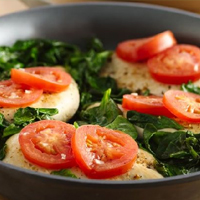
Ingredients
- 1 tablespoon olive oil or vegetable oil
- 4 pieces chicken breast (about 500 grams)
- 1 garlic clove finely chopped
- ½ teaspoon dried oregano
- ½ teaspoon salt
- ¼ teaspoon pepper
- ¼ cup dry white wine or water
- 2 sliced tomatoes
- 170 grams of mallow leaves (about 3 ½ cups)
Directions
- Heat the oil in a non-stick skillet over medium heat.
- Sprinkle the pieces of chicken breast with garlic, oregano, salt, and pepper and place them in the skillet.
- Fry the chicken for 15-20 minutes, be sure to turn the meat at least once.
- Add the wine/water and the sliced tomatoes to the pan and continue cooking with a lid.
- After 2-3 minutes of cooking the tomatoes, add the mallow leaves, cover the pan again and continue cooking for 2-3 minutes or until the mallow softens.
- Take both the chicken and the veggies off the heat, arrange on a plate and eat away!
Mallow Soup
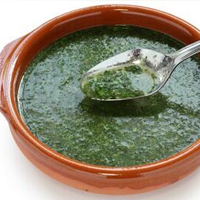
Ingredients
- 1 large onion
- 1 large tomato
- 2 bell peppers, preferable of different colors
- ½ bunch of celery
- 4 carrots
- 3 large potatoes
- 3 garlic cloves
- Olive oil to cover the bottom of your soup kettle
- 6 cups of water, enriched with 2 Tbsp. of good-quality soy sauce or the same quantity of chicken broth
- 2 tsp. salt plus black pepper to taste.
- 2 large handfuls of clean mallow leaves and/or roots
Directions
- Dice the onion; chop tomato, peppers, celery, carrots and potatoes.
- Sauté the onions, adding the other vegetables as the onions start to wilt
- Chop the garlic finely; add to the sautéed vegetables when they are looking golden and start smelling cooked.
- Add water and seasonings; simmer for 15-20 minutes. A nice touch at this point is to blend the cooked vegetables, with some of the soup, and return the blended mass to the pot. Children especially appreciate blended soups.
- Chop the Mallow into narrow ribbons: if using roots, slice finely. Add to the pot and cook a further 10 minutes.
- Serve with croutons, or chopped parsley, or simply on its own.
Common Mallow and Lotus Root
Ingredients
- 750 g Common Mallow leaves (mallow leaves).
- 250 g nadir (lotus stem).
- Salt to taste
- 3 red dried whole chilies
- 5 table spoon red chili powder
- 1/4 table spoon ginger powder
- 1 medium size onion
- 3-4 ladles of mustard oil
- 1 pinch asafoetida
Directions
- Clean Common Mallow, wash 3-4 hours before cooking to drain off the water, peel off the nadir, cut into round chips, wash and keep aside. Cut and wash onion.
- Heat oil in a deep pan, fry nadir and keep in a bowl.
- Fry onions till brown and turn the stove on low flame, put red chili powder and stir till dark red colors appears.
- Add salt, asafoetida, ginger powder, stir and add Common Mallow leaves and stir gently so that oil and other contents mix with the leaves evenly.
- As soon as sap of the leaves start coming out add fried nadir and red dried whole chilies.
- Cook on low flame with occasional stirring till the liquid dries up and oil appears.
- Serve the vegetable with boiled rice.
Other facts
- Cream, yellow and green dyes can be obtained from the plant and the seed heads.
- Tincture of the flowers forms a very delicate test for alkalis.
- Leaves are used to relieve insect bites and stings.
- Fiber obtained from the stems is useful for cordage, textiles and paper making.
- Flowers were spread on doorways and woven into garlands or chaplets for celebrating May Day.
- It also has been used in ethno-veterinary and animal feed.
Precautions
- When grown on nitrogen rich soils, the plant tends to concentrate high levels of nitrates in its leaves.
- Large doses, however, can be used as a laxative and in turn cause diarrhea.
References:
https://www.itis.gov/servlet/SingleRpt/SingleRpt?search_topic=TSN&search_value=21840#null
https://davesgarden.com/guides/pf/go/124/
https://npgsweb.ars-grin.gov/gringlobal/taxonomydetail.aspx?id=23307
https://pfaf.org/user/Plant.aspx?LatinName=Malva+sylvestris
https://www.cabi.org/ISC/datasheet/115485
http://www.missouribotanicalgarden.org/PlantFinder/PlantFinderDetails.aspx?taxonid=282568&isprofile=0&
http://www.floracatalana.net/malva-sylvestris-l
https://www.drugs.com/npp/mallow.html
https://botanical.com/botanical/mgmh/m/mallow07.html
https://plants.usda.gov/core/profile?symbol=MASY
http://www.theplantlist.org/tpl1.1/record/kew-2504118
https://en.wikipedia.org/wiki/Malva_sylvestris
Comments
comments


